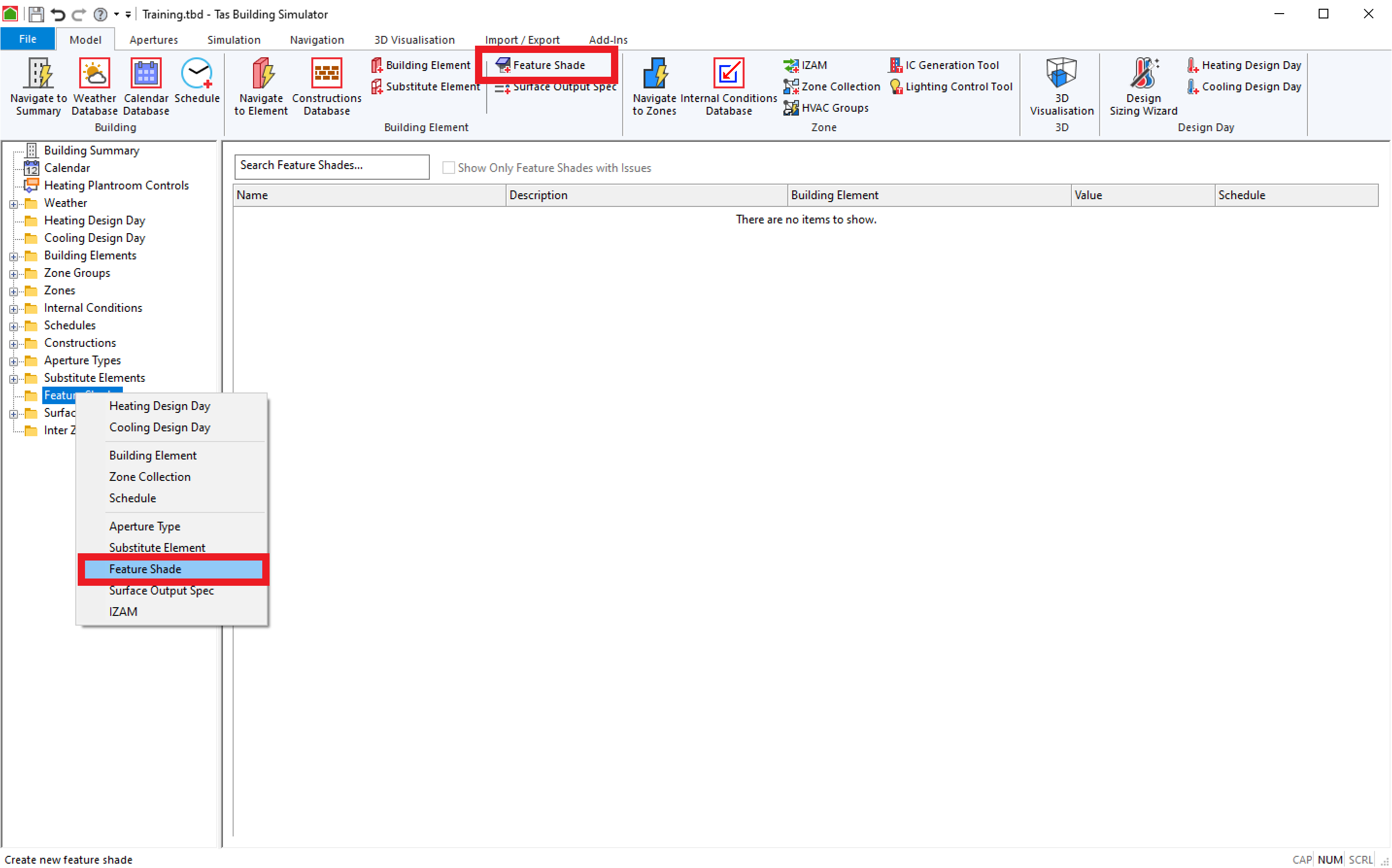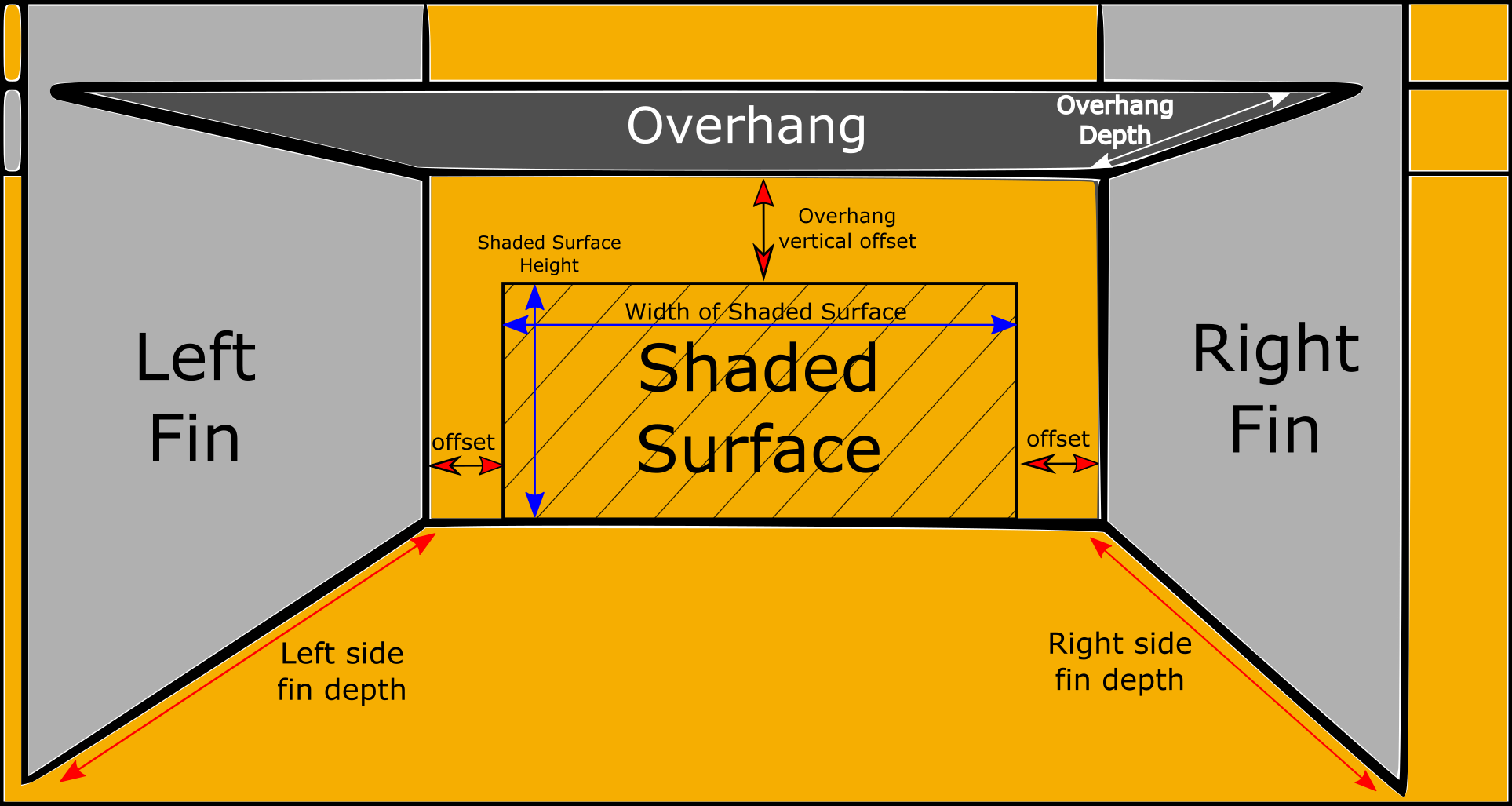Feature Shades¶
Feature shades are a legacy method of modelling shading systems. Feature shades allows you to define simple shading types in terms of side-fins and overhangs.
Note
Wherever possible, you should try to model the shades directly in the 3D modeller as this is the most accurate method of modelling shades.
A shading type may be assigned to any building element, and will apply to all exposed surfaces of that building element type (with the exception of flat roofs and floors, for which the orientation is ambiguous). The shading effect will be combined with any shadow calculations that are performed when exiting from the 3D Modeller.
It is not necessary to repeat the Tas 3D Modeller shading calculations after setting shading features.
Feature shading applies to direct and diffuse solar radiation.
All shading features are assumed to be infinite in extent: overhangs are infinitely wide and side-fins are infinitely tall. Where fins and overhangs meet, they are truncated. With this truncation available it is possible to make a finite overhang by using fully transparent side fins with offsets to determine the overhang extent.
For partially transmitting obstructions, the possibility of double transmission (through both a side-fin and overhang) is taken into account by the program.
Surfaces which have different shading types must be assigned different building elements in Tas 3D Modeller.
Warning
You should not apply more than one feature shade to the same building element on the same day type.
Creating¶
You can create a new feature shade by right clicking in the tree-view, or via the ribbon:

You can delete a feature shade by clicking on it and pressing the Delete key on the keyboard.
Properties¶
Feature shades have a number of parameters describing their geometry, in addition to properties controlling when they are applied:

The properties correspond to the following geometrical attributes of the shade:

Property |
Definition |
|
|---|---|---|
Surface |
Height |
Height of the shaded surface |
Width |
Width of the shaded surface |
|
Left Fin |
Depth |
Depth of the left side-fin (as viewed from outside of building) |
Offset |
The horizontal offset of the left side-fin from the left edge of the shaded surface. |
|
Transmittance |
The transmittance of the left-side fin solar radiation (0 for opaque, 1 for transparent) |
|
Right Fin |
Depth |
The depth of the right-side fin |
Offset |
The horizontal offset of the right-side fin from the right edge of the shaded surface. |
|
Transmittance |
The transmittance of the right-side fin solar radiation (0 for transparent, 1 for opaque) |
|
Overhang |
Depth |
The depth of the overhang |
Offset |
The vertical offset of the overhang from the top edge of the shaded surface. A negative value denotes an overhang which extends downwards from the top edge, such as an awning. |
|
Transmittance |
The transmittance of the overhang to solar radiation (0 for opaque, 1 for transparent) |
Proportion¶
The proportion of the feature shades’ overhang and fin depth that applies to the building element. If set to 0, no shading will be applied.